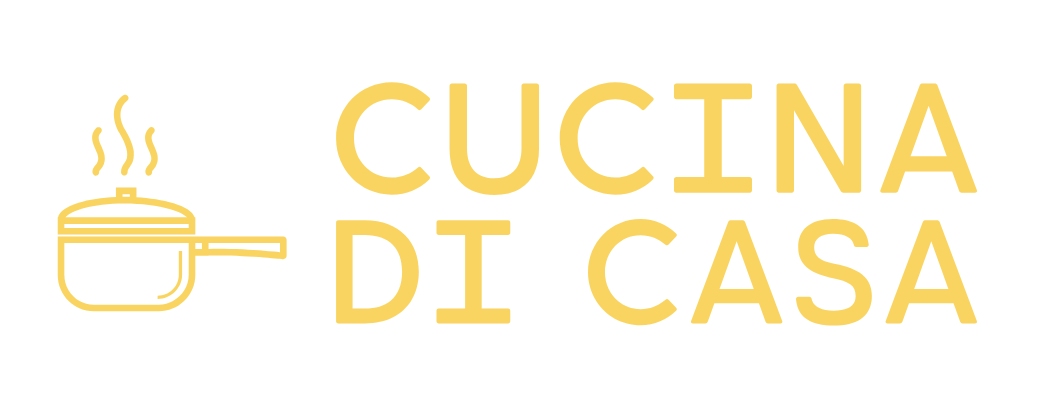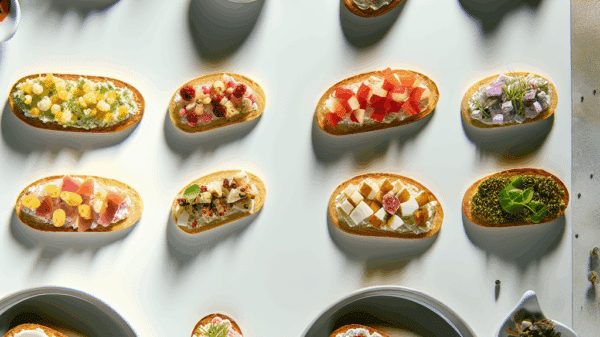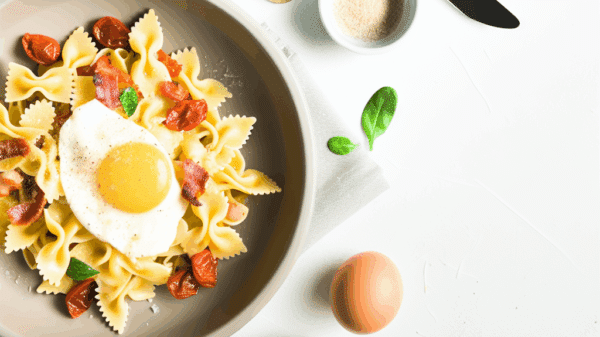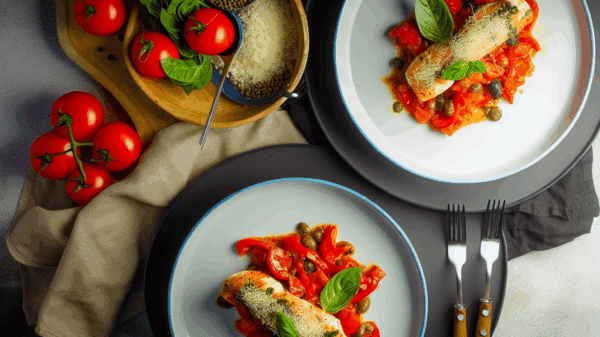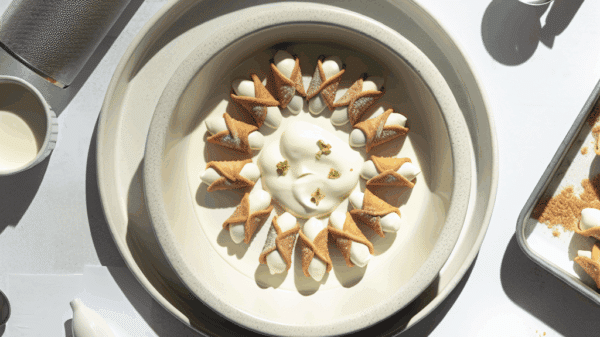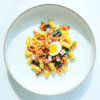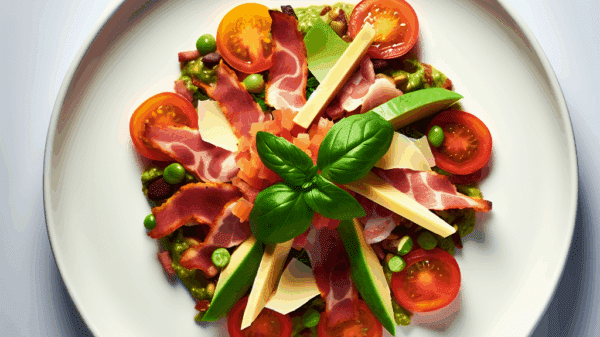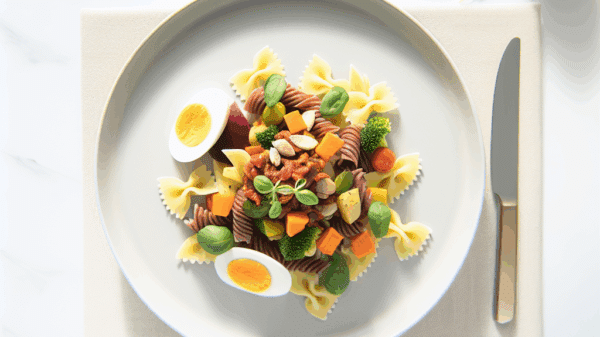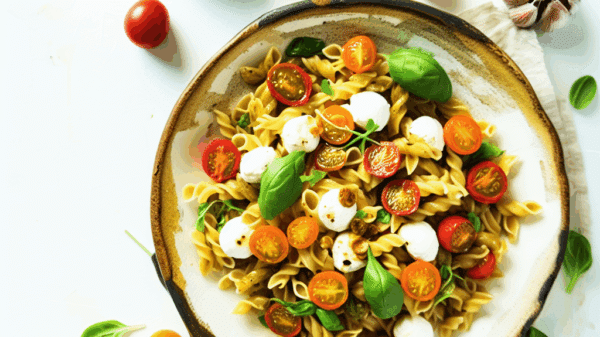Overview
Antipasto, a traditional Italian appetizer, serves as an enticing start to any meal. Ideal for gatherings, parties, or a simple family dinner, these vibrant dishes offer a delightful blend of flavors and textures. Estimated prep time can range from 15 to 60 minutes depending on the recipe’s complexity, while cooking can take an additional 10 to 30 minutes. Difficulty varies from simple to intermediate based on the dish.
Originating from various regions of Italy—including Tuscan, Sicilian, Roman, and Venetian—antipasto reflects local customs and ingredients. Italians traditionally serve it before meals, during the aperitivo hour, or as part of festive celebratory occasions.
Ingredients
- 200g (7 oz) extra-virgin olive oil
- 100g (3.5 oz) Parmigiano-Reggiano, grated
- 100g (3.5 oz) fresh basil leaves
- 500g (17.5 oz) San Marzano tomatoes, chopped
- 300g (10.5 oz) rustic bread, toasted
- 150g (5.25 oz) mixed olives, pitted
- 100g (3.5 oz) prosciutto or salami
- 250g (8.8 oz) fresh mozzarella, cubed
- 50g (1.76 oz) anchovies (optional)
- 50g (1.76 oz) ricotta (optional)
- 100g (3.5 oz) pesto (optional)
Step-by-Step Instructions
- Prepare your ingredients: Wash and chop vegetables and herbs. Allow 10 minutes for this. Always ensure herbs are fresh to provide a vibrant flavor.
- Toast the bread: Preheat the oven to 180°C (350°F). Slice the rustic bread and lay pieces on a baking sheet. Drizzle with olive oil and toast for 10-15 minutes until golden brown, checking frequently to avoid burning.
- Marinate the olives: Combine olives with a splash of olive oil, garlic, and herbs in a bowl. Let it sit for 15-20 minutes to absorb flavors.
- Prep the tomatoes: In a separate bowl, mix chopped San Marzano tomatoes with a drizzle of olive oil and salt. Allow it to sit for muscle’s flavor balance while prepping other components.
- Assemble the antipasto platter: Layer the ingredients on a large platter starting with the toasted bread, followed by olives, prosciutto, mozzarella, and marinated tomatoes. Finish with fresh basil and generous sprinklings of Parmigiano-Reggiano.
- Garnish: Drizzle additional olive oil over the assembled platter and include optional toppings like anchovies or ricotta for added flavor. Serve immediately.
Common mistakes to avoid: Prevent soggy bread by ensuring it’s toasted just right; avoid burning garlic by adding it later in the marinating process; refrain from overly seasoning your dishes; maintain a balance of flavors for a palatable dish.
Variations & Substitutions
For dietary swaps, consider using:
- Vegan: Replace cheese with marinated tofu, and use vegan pesto.
- Gluten-free: Substitute traditional bread with gluten-free options.
- Dairy-free: Omit cheese entirely or use cashew cheese.
Regional and creative variations include:
- Sicilian Caponata: A sweet and sour eggplant medley can be served alongside antipasto.
- Tuscan Crostini: Top toasted bread with chicken liver pâté or white bean spread.
- Venetian Cicchetti: Serve small bites on toasted bread topped with various ingredients.
Modern serving styles like mini skewers or pre-plated servings can elevate your antipasto for parties or buffets.
Make Ahead, Storage & Reheating
Several components can be prepared ahead of time. Tomato and olive mixtures can be mixed and stored in the fridge a day in advance. For the best texture, toast your bread just before serving.
For short-term storage, refrigerate leftover antipasti in an airtight container for up to 3 days. When rehaeding, use the oven for bread to maintain crispness rather than microwaving.
Nutrition (Approx.)
Per serving, the antipasto platter can contain approximately:
- Calories: 350
- Protein: 12g
- Fat: 25g
- Carbohydrates: 18g
For lighter versions, consider reducing olive oil, substituting light cheeses, or increasing the ratio of vegetables.
Serving Suggestions
Pair your antipasto with a refreshing Italian wine, a spritz cocktail, or sparkling water. For an elegant presentation, use a large wooden board with separate bowls for different ingredients or clearly defined sections for each building block.
For kid-friendly options, mini skewers of cheese, cured meats, and cherry tomatoes can make for an engaging and accessible dish. Grab-and-go servings can involve smaller crostini cut-outs or packaged ingredients for easy snacking.
FAQs
- How do I keep bruschetta crispy? Toast just before serving and avoid wet toppings until the last moment.
- Can I prepare antipasto ahead of time? Yes, but store components separately and assemble just before serving for optimal freshness.
- What can I substitute for meat in antipasto? Consider artichoke hearts, roasted peppers, or various plant-based cheeses.
- Can I make this dish vegan? Absolutely! Use vegan cheeses and skip prosciutto or salami.
- How long can I store leftover antipasto? About 3 days refrigerated in an airtight container.
Conclusion
Creating an antipasto platter can be an art form brimming with authentic Italian flavors. Remember to balance textures and flavors for the best experience. Indulge in regional varieties or blend multiple recipes for a stunning Italian-inspired spread. We hope you explore these thirty unique antipasto options. Don’t forget to share your favorite Italian starter recipes with us!
